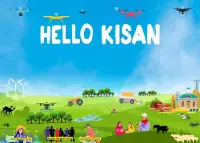1. Where Did These Grains Come From Anyway? (OG Grain Vibe / Historical Roots); Wheat and rice are foundational crops globally, with millennia of history as primary food sources for billions.
2. Were They Ever a Big Deal? (Past Life / Past Relevance); Absolutely! The Green Revolution heavily focused on increasing their yields, making them cornerstones of global food security
3. Why the Buzz Now? (Now Playing / Current Significance); They remain dietary staples for a massive global population and are key components in numerous food industries.
4. What's the Long Game Here? (Future Forecast / Long-Term Potential); While facing challenges like water scarcity (especially for rice) and climate change impacts, ongoing research aims for more resilient and efficient varieties. Demand will likely stay high.
5. Could Your Farm Be a Millet Powerhouse? (Your Farm? Quick Check / Farm Suitability Assessment); Consider your water availability (rice needs a lot!), soil type, and established market access for these major commodities. Government policies and support are often significant factors.
6. Being an Absentee Farmer – Can You Still Make This Work? (Absentee Life Hacks (or Fails) / Absentee Farmer Considerations); It’s common, but requires reliable farm management, efficient irrigation systems (for rice), and strong post-harvest handling to maintain quality and market value.
7. Show Me the Money! What's the Deal with Costs and Returns?(The Coin Flip / Economic Implications); Input costs (seeds, fertilizers, irrigation, labor) can be significant. Market prices are often influenced by government policies and global supply. Efficient farming practices are key to profitability and ROI.
Hello Kisan's Take: Wheat and rice are established, high-demand crops with well-defined markets. However, rice cultivation particularly requires careful water management. For absentee farmers, choosing suitable varieties, ensuring efficient management, and understanding market dynamics are crucial for success.




